Making mineral-rich herbal extractions from wild plants with vinegar

by Corinna Wood
My heart sings when it's time to make herbal vinegars with my favorite wild and weedy plants!
It’s everything I love about making herbal medicine—cavorting with nature, making apothecary magic, and caring for my body.
And at the end of the process, I have a potent herbal extraction that I consume daily at my kitchen table.
Table of contents
- Wise Woman herbal extractions
- Delicious, nutritious herbal vinegars
- Making herbal vinegar in 6 easy steps
- The deficiency dilemma
- Herbal vinegar salad dressing recipe
Herbal extractions in the wise woman kitchen
 Herbal extractions are a staple in every wise woman’s kitchen. And herbal vinegars are among the methods of extraction at the top of my list. In this form, the minerals in particular are extracted more effectively—essential nutrients for strong bones, hair, teeth, nails, and much more.
Herbal extractions are a staple in every wise woman’s kitchen. And herbal vinegars are among the methods of extraction at the top of my list. In this form, the minerals in particular are extracted more effectively—essential nutrients for strong bones, hair, teeth, nails, and much more.
There are many different methods for extracting medicinal properties and nutrients from herbs. The four most common methods of herbal extractions are infusions, tinctures, infused oils and herbal vinegars.
Each method provides different benefits:
- Infusions are top notch as daily tonics, extracting minerals, chlorophyll and water-soluble vitamins
- Tinctures are fast-acting, long lasting alcohol extractions that withdraw medicinal properties from within the plant alkaloids
- Infused oils are predominantly for external uses and extract vulnerary properties for skin and wound healing
- Vinegars are a delicious way to extract minerals and incorporate them in small doses into your cooking as a nutritious food
Using food as medicine is simple and fun, so let's take a closer look at vinegar herbal extractions—or simply, herbal vinegar.
Using vinegar for delicious, nutritious herbal extractions
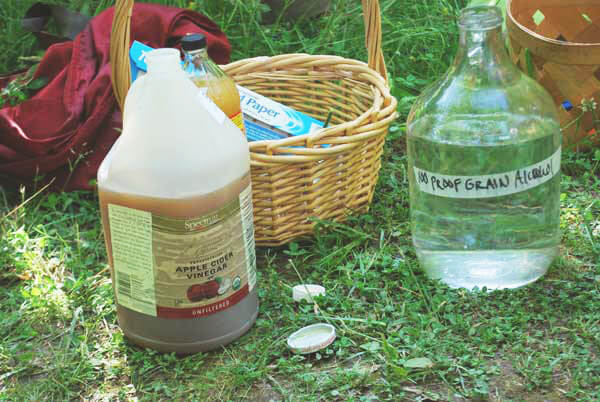 Because of its acidity, vinegar is the preferred medium for extracting minerals from nutritious wild plants.
Because of its acidity, vinegar is the preferred medium for extracting minerals from nutritious wild plants.
You might be surprised to hear that wild plants contain more minerals than most common vegetables. Did you know that dandelion leaves have at least 7 times more iron than spinach?
How do you use herbal vinegars?
- In homemade salad dressing
- Sprinkled on cooked greens
- In marinades or sauces
- Taking a tablespoon in water as a daily tonic
- Use externally as a hair rinse as needed to reduce oil
Many wild plants can be extracted into vinegars. My three favorites are chickweed, nettle, and mugwort—for both their medicinal value and also their sheer flavor!
You can easily make these herbal vinegars yourself, with one or all three of these common wild plants.
Chickweed—a lovely wild weed for herbal vinegars
 Chickweed is the most widespread of these three beauties. In fact, if you have garden beds, you probably know that chickweed loves rich garden soil and thrives in the cool, wet weather of spring and fall.
Chickweed is the most widespread of these three beauties. In fact, if you have garden beds, you probably know that chickweed loves rich garden soil and thrives in the cool, wet weather of spring and fall.
Yet many gardeners don't realize that this "weed" is nutritious and delicious in a wild salad or herbal vinegar.
You can tell chickweed by its tiny, white, star-shaped flowers, indicated in its botanical name, Stellaria media. Also look for opposite leaves. When you're harvesting chickweed for vinegar, don't forget to set aside some for tonight's wild salad!
Stinging nettle—without the sting
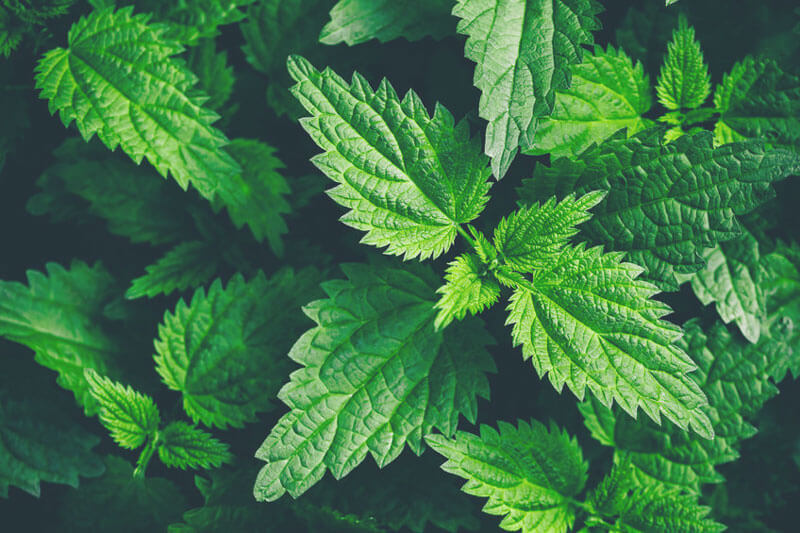 When it comes to wild medicinals, Nettle is one of the easiest to identify—if you're not sure you have the right plant, just brush your hand against it!
When it comes to wild medicinals, Nettle is one of the easiest to identify—if you're not sure you have the right plant, just brush your hand against it!
The nettle sting, which is mild for most people, is felt immediately, and usually wears off within a few hours. The benign sting is actually used as a treatment for arthritic joints!
There are two species of nettle common to North America: "Barn Nettle," Urtica dioica (pictured), and "Wood Nettle," Laportea canadensis. Long used as an iron and adrenal tonic, Urtica dioica is the species widely recognized for its medicinal value, yet both species are beneficial.
Nettle can be gathered with gloves anytime from when it peeks out of the ground until just before it flowers. Don't worry, when you make vinegar—or cook—from nettles, the sting goes away!
Stinging nettle is an herb every woman can benefit from. She is a veritable cornucopia of nutrients, including chlorophyll, vitamins, and minerals. You'll receive those mineral benefits when you extract nettles into an herbal vinegar.
Mugwort, a fragrant herb of the moon goddess
 Mugwort, Artemisia vulgaris, is a fragrant, magical herb that is traditionally used in dream pillows to make dreams more vivid and more memorable.
Mugwort, Artemisia vulgaris, is a fragrant, magical herb that is traditionally used in dream pillows to make dreams more vivid and more memorable.
Mugwort can be harvested for vinegar until it is one foot tall. After that, it becomes bitter and somewhat toxic.
Also note that mugwort can be confused with other plants—including poison hemlock—so be sure to check for its fragrant smell when crushed as well as the silver sheen to the back of the leaf.
In fact, this silver color, associated with the moon goddess Artemis, is where Artemisia vulgaris gets her name. Try some in your pillow tonight!
As you know, it's essential to positively identify any plants you're harvesting for food or medicine. First things first: Grab my free guide on 3 Poisonous Plants to Watch Out For (pdf) so you can stay safe on your herbal adventures.
Making herbal vinegar in 6 easy steps
To make your own herbal vinegar extraction, follow these easy steps:
- Tightly pack a jar full of fresh plant material. If you're using more than one plant, brew them separately so you can get to know what each of them looks and tastes. You can always combine the finished product later.
- Fill the jar to the top with apple cider vinegar (raw, organic vinegars give you beneficial microorganisms much like yogurt does).
- Cover. Since vinegar rusts metal, a cork or plastic top is preferable. Lining a metal lid with a piece of waxed paper or plastic works too.
- Label your jar with the date harvested, plant name, and menstruum used (vinegar).
- Top it off. The next day, the plant will usually have absorbed enough liquid to end up uncovered, so top off the liquid level. Check the liquid level once or twice over the first week or so.
- Six weeks later, just strain out the plant material, and you have your own wild herb vinegar!
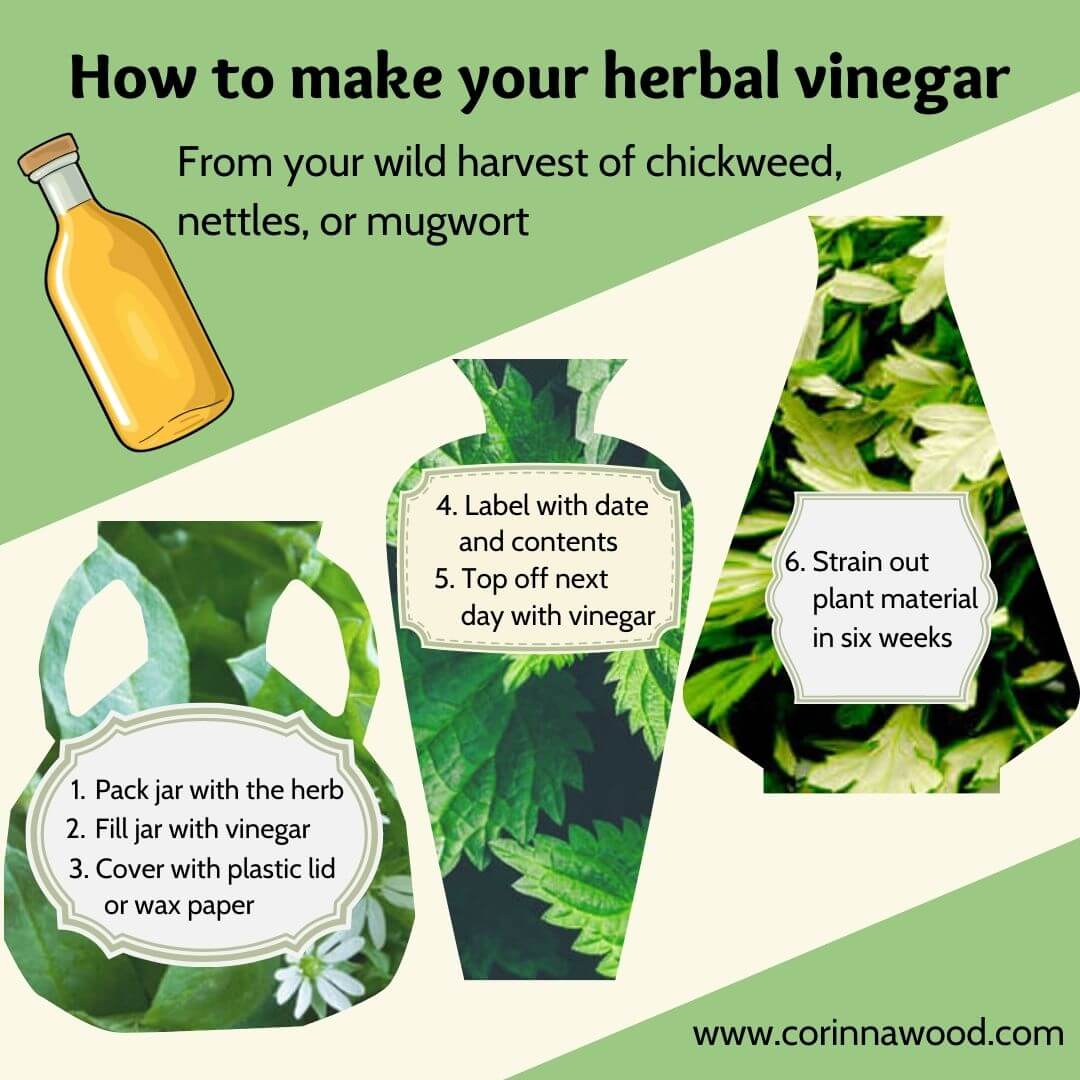
Why mineral-rich herbal extractions are important—the deficiency dilemma
One of the keys to restoring your health and energy is building a foundation of nutrition through nourishing traditional foods—ideally including wild plants.
Mineral deficiency is extremely common these days. Minerals are essential, and not only for building strong bones. Minerals also support the smooth functioning of your nervous, immune and hormonal systems—which covers a lot!
Unfortunately, large-scale, industrial farming has stripped the soils and washed the minerals out to sea, so much so that even organic foods are less nutrient dense than the food of our ancestors.
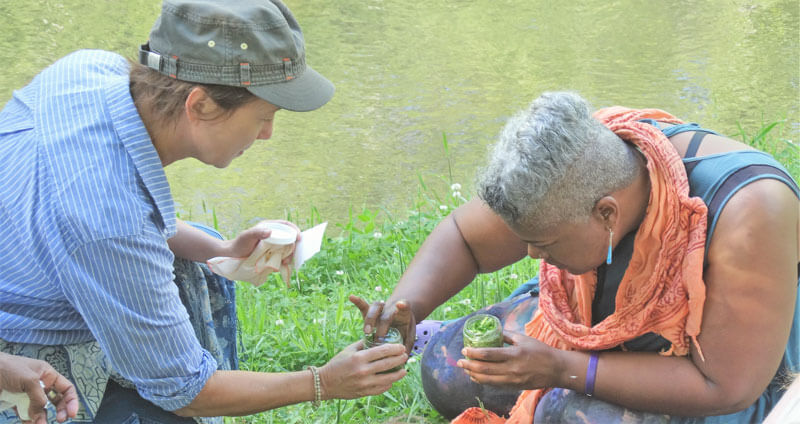
When you eat wild plants—just as your foremothers did—your body can easily digest and absorb nutrients. Rather than just relying on tablets, you can eat your medicine in a form with which your ancestors evolved!
You can often find common mineral-rich wild plants such as dandelion, nettles, chickweed, violet, mugwort and yellow dock growing in your yard or nearby.
They provide not only macroelements such as calcium, phosphate, potassium, and magnesium—but also microelements known as trace minerals: iron, zinc, copper, manganese, selenium, iodine and others.
My all-time favorite ways to receive the mineral benefits of wild plants are herbal vinegars and herbal infusions. Let your food be your medicine!
HERBAL VINEGAR SALAD DRESSING RECIPE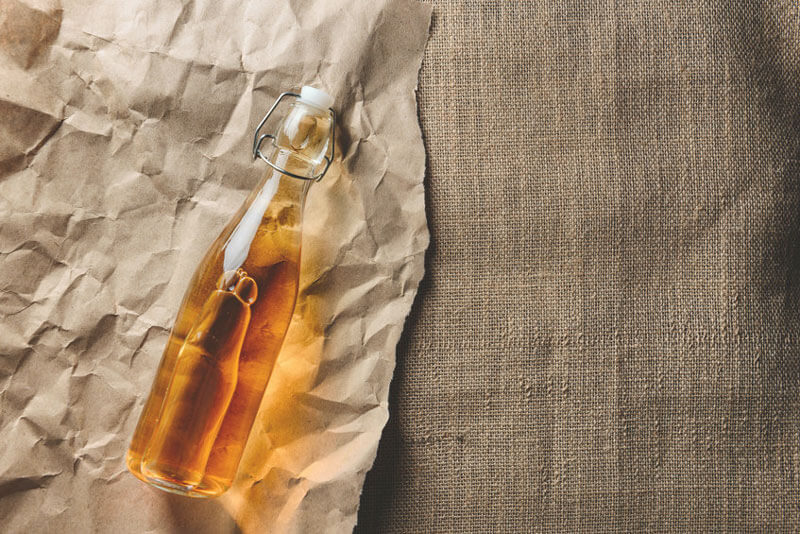 Here's the scoop on how to whip up a delicious and nutritious salad dressing with your herbal vinegars.
Here's the scoop on how to whip up a delicious and nutritious salad dressing with your herbal vinegars.
Ingredients
3 tablespoons herbal vinegar
1 teaspoon Dijon-type mustard, smooth or grainy
3/4 cup extra virgin olive oil
pinch of salt
pinch of garlic powder (or fresh minced garlic)
1. Dip a fork into the jar of mustard and transfer about 1 teaspoon to a small bowl. Add vinegar and mix.
2. Pour in olive oil in a thin stream, stirring all the while with a fork, until oil is well mixed or emulsified. Stir in salt and garlic.
3. Drizzle over your salad, and store extra in the fridge. Give it an extra shake as needed before pouring.
Nourishing your body with mineral-rich herbal vinegar extractions
Sister, I’m sure you too love feeling full of vitality, strength, and energy for the many arenas that you’re called to in daily life. Yet when your body is depleted in minerals, you may find yourself flagging . . .
You’re not alone. It’s common for women to lose minerals through menstruation, pregnancy, and menopause.
Perhaps you’ve heard from the medical field that it's too late for you? Not so! While it is easiest to build bone mass in our 30s, we can do so anytime, even during or after menopause.
Doctors may say that because it can be difficult to build bone mass after menopause with the common methods of hormone replacement therapy and calcium supplements.
Yet for many women, incorporating these more natural mineral sources into your daily life does build strong bones!
Mineral rich wild plants and other nourishing foods such as yogurt, seaweed, and bone broth—along with weight-bearing exercise—can support you in remaining vital and healthy long into your elder years.
Where to start? First, identify some herbs that you can access locally through wild foraging or purchasing from local herbal folks. Thus begins your own herbal extraction adventures.
The days are getting longer. As the sun goes down, if I can keep my son from eating everything before it gets into the basket, we'll have a wild salad tonight and plenty left for making this year's vinegar!
________
Spread the wild wise woman ways! Link to this article from your website, or share with your friends using this button~
Comments ~ what stands out for you today?








